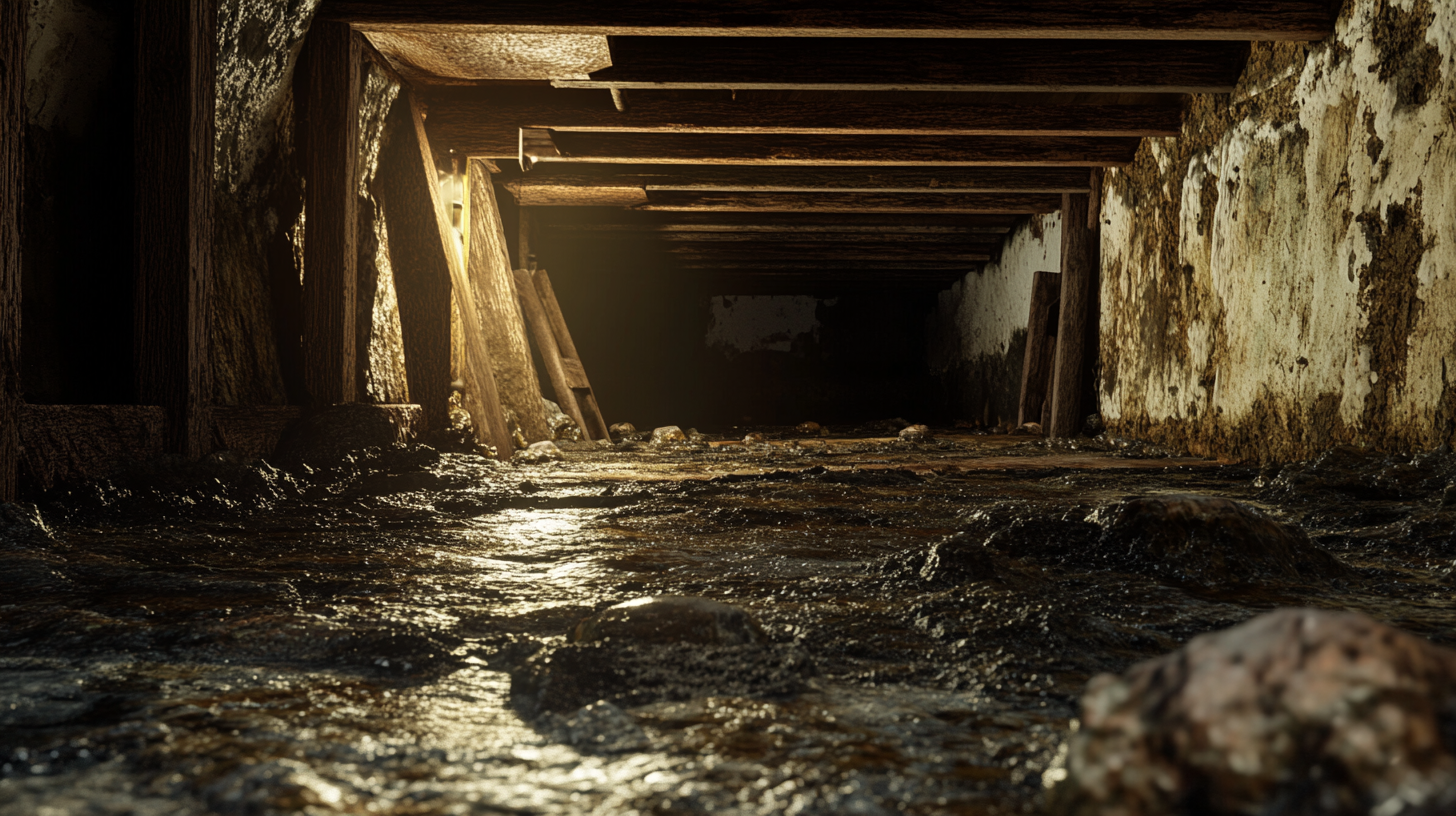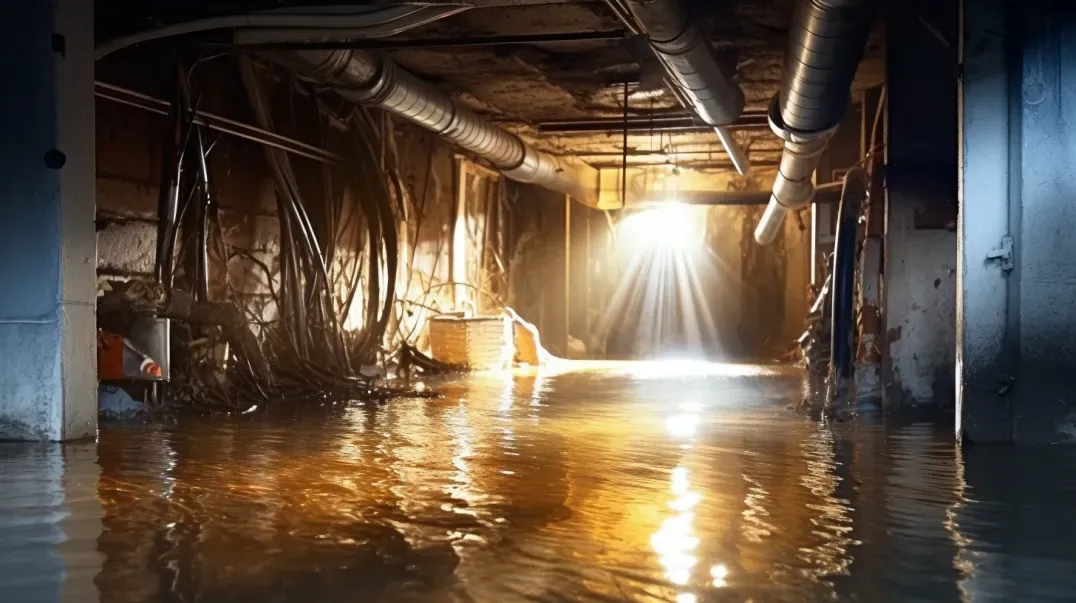Now IS THe Time To...

Crawl Space Services In Knoxville, TN
Stetson Howard: 865-432-6743
CRAWL SPACE ENCAPSULATION, REPAIR, WATERPROOFING & MOLD REMOVAL
No-Obligation, Free Inspections
No-Obligation Free Estimates
We Warranty All of Our Work
100% Satisfaction Guaranteed
The journey to safeguarding your home from water damage begins not just with choosing the right sump pump but also with equipping yourself with the proper tools for installation. The significance of this preparation cannot be overstated; the right tools not only ease the installation process but also play a pivotal role in ensuring the longevity and efficiency of your sump pump. This blog delves into the essential toolkit for sump pump installation, highlighting how each tool contributes to a seamless setup and the ongoing reliability of your system.
Proper installation is the bedrock upon which the effectiveness of a sump pump rests. It's a process that demands precision, foresight, and the right set of tools. From ensuring a clean, correctly sized pit to securing tight, leak-proof connections, the tools you use can significantly impact the installation's success. Moreover, the longevity and efficiency of your sump pump are directly influenced by the quality of its installation. A well-installed pump is less prone to malfunctions, operates more efficiently, and serves your home longer, providing unmatched peace of mind during rainy seasons and thaw cycles.
This blog aims to arm homeowners with the knowledge of what tools are necessary for sump pump installation and how these tools facilitate the process. Whether you're a seasoned DIY enthusiast or a homeowner looking to understand the installation process better, recognizing the importance of proper tools is the first step toward ensuring your sump pump is installed correctly and ready to protect your home from water damage. Join us as we explore the toolkit essentials for sump pump installation, offering insights into how each tool contributes to a successful setup and the enduring performance of your sump pump system.
Understanding Sump Pump Installation
installing a sump pump is a proactive measure to protect your home from the potential damages caused by water intrusion. While the process may seem daunting at first, understanding the basic steps involved and the importance of preparation can demystify the installation process. This section provides an overview of the installation process, emphasizing the necessity of having the right tools at hand and adequately preparing for the task.
Overview of the Installation Process
Basic Steps Involved in Installing a Sump Pump
The installation of a sump pump involves several key steps, each critical to ensuring the system operates efficiently and effectively:
- Selecting the Right Sump Pump: Begin by choosing a sump pump that suits the specific needs of your home, considering factors such as the size of your basement, the average water volume, and the type of debris commonly found in the water.
- Identifying the Installation Site: Determine the lowest point in your basement where water naturally collects. This is typically where the sump pit will be located.
- Preparing the Sump Pit: Dig a hole for the sump pit, ensuring it is large enough to accommodate your sump pump. Line the pit with gravel and place the pump inside.
- Installing the Discharge Pipe: Attach the discharge pipe to the pump, ensuring it routes water away from your home's foundation. Include a check valve to prevent backflow.
- Connecting to Power: Ensure the pump is connected to a power source. If using a battery backup system, install it according to the manufacturer's instructions.
- Testing the System: Fill the sump pit with water to test the pump's activation and ensure it efficiently removes water through the discharge pipe.
Importance of Preparation and Having the Right Tools at Hand
Proper preparation is crucial for a smooth installation process. This includes gathering all necessary tools and materials before beginning the installation. Essential tools for sump pump installation typically include:
- A shovel or digging tools for preparing the sump pit
- A drill with various bits for installing the discharge pipe
- PVC piping and a saw or cutter for customizing the discharge line
- A level to ensure proper placement and alignment
- Sealants and connectors for securing the pump and pipes
Having these tools readily available can significantly streamline the installation process, reducing the likelihood of delays or issues arising from inadequate preparation.
By understanding the basic steps of sump pump installation and the importance of being well-prepared with the right tools, homeowners can approach this task with confidence. Proper installation not only ensures that your sump pump is ready to protect your home from water damage but also contributes to the system's longevity and efficiency.
Essential Tools for Sump Pump Installation
Installing a sump pump is a critical step in protecting your home from water damage. The process requires precision, attention to detail, and, importantly, the right set of tools. From basic hand tools to power tools, and measuring and leveling instruments, having the appropriate equipment on hand is essential for a successful installation. This section outlines the tools necessary for sump pump installation, offering insights into their uses and importance.
Basic Hand Tools
List and Description of Basic Hand Tools Needed
A variety of hand tools are essential for tasks such as securing connections, adjusting components, and preparing materials. Key hand tools include:
- Screwdrivers: A set of both flathead and Phillips screwdrivers for tightening screws on the pump, check valve, and discharge pipe fittings.
- Pliers: Needle-nose and standard pliers for gripping and bending small parts, as well as adjusting and securing clamps.
- Hammer: Used for minor demolition or to assist in securing the sump pump basin into the ground.
- Adjustable Wrench: Necessary for tightening or loosening nuts and bolts on the pump and piping connections.
- Utility Knife: For cutting flexible discharge hose or trimming sealing gaskets.
These basic tools are indispensable for the various manual tasks involved in sump pump installation, ensuring that all components are securely and properly assembled.
Power Tools
Necessary Power Tools and Safety Tips for Using Them
Power tools can significantly expedite the installation process, especially when preparing the sump pit and discharge route. Essential power tools include:
- Drill: A power drill with various bits for creating holes in the sump basin for inlet pipes or securing the basin to the floor.
- Saw: A reciprocating saw or a circular saw may be needed to cut through concrete or other materials when creating the sump pit or adjusting the discharge pipe length.
Safety Tips:
- Always wear appropriate personal protective equipment (PPE), such as safety goggles and gloves, when using power tools.
- Ensure the work area is well-lit and free from obstructions.
- Follow the manufacturer's instructions for each tool and inspect them before use to ensure they are in good working condition.
Measuring and Leveling Tools
Importance of Precision and the Tools Required for Accurate Measurement and Leveling
Precision is crucial in sump pump installation to ensure effective water flow and pump operation. Tools needed for accurate measurement and leveling include:
- Tape Measure: For measuring the dimensions of the sump pit, the length of the discharge pipe, and the distance to the discharge point.
- Level: A spirit level is essential for ensuring the sump pump basin is installed levelly, which is crucial for proper pump operation and float switch activation.
Accurate measurements and leveling ensure that the sump pump system is set up correctly from the start, reducing the likelihood of issues related to improper installation.
Required Materials and Supplies
The installation of a sump pump is a comprehensive task that goes beyond just placing a pump in a pit. It involves a detailed setup of the pump unit itself, the necessary plumbing to redirect water, and measures to ensure the system is leak-proof and insulated. This section provides an overview of the essential materials and supplies needed for sump pump installation, including the pump and its components, plumbing supplies, and sealing and insulation materials.
Sump Pump and Components
Overview of the Sump Pump Unit, Float Switch, and Check Valve
- Sump Pump Unit: The core of the system, available in various types such as submersible and pedestal. The choice depends on your basement's specific needs and water management requirements.
- Float Switch: A crucial component that automatically activates the pump when the water level rises to a certain point. It's essential for the autonomous operation of the sump pump.
- Check Valve: Installed in the discharge line, the check valve prevents water from flowing back into the pit after being pumped out, ensuring efficient water removal.
These components are foundational to the sump pump system, each playing a vital role in its operation and effectiveness in water management.
Plumbing Supplies
List of Necessary Plumbing Materials
Proper installation of the sump pump requires various plumbing materials to ensure that water is efficiently directed away from your home. Essential plumbing supplies include:
- PVC Pipes: Used for the discharge line, which carries water from the pump to the outside of your home.
- Fittings: Elbows, T-joints, and other PVC fittings are necessary for connecting pipes and creating the optimal path for water discharge.
- Hose Clamps: Needed for securing connections between pipes and fittings to prevent leaks.
- Check Valve: Although mentioned above, it's also a critical plumbing component that prevents backflow.
Having the right plumbing materials on hand is crucial for a smooth installation process and the long-term reliability of the sump pump system.
Sealing and Insulation Materials
Types of Sealants and Insulation Required to Secure Connections and Prevent Leaks
To ensure the sump pump system is watertight and insulated, especially in colder climates where freezing can be a concern, the following materials are necessary:
- Sealants: Silicone or plumber's putty can be used to seal connections, especially around the sump pit lid and where the discharge pipe exits the home, to prevent water leakage and air drafts.
- Pipe Insulation: Foam pipe insulation helps protect the discharge line from freezing, which is crucial for preventing blockages and ensuring the pump can operate in cold weather.
Using the appropriate sealing and insulation materials is essential for maintaining the efficiency of the sump pump system and protecting your home from water damage.
Required Materials and Supplies for Sump Pump Installation
Ensuring the safety and dryness of your basement or crawl space against water damage starts with a properly installed sump pump system. This system's efficiency hinges not just on the sump pump itself but also on the quality and suitability of the accompanying materials and supplies. From the core components that make up the sump pump unit to the plumbing supplies and sealing materials needed to complete the installation, each element plays a crucial role. This guide provides an overview of the essential materials and supplies required for a successful sump pump installation.
Sump Pump and Components
Overview of the Sump Pump Unit, Float Switch, and Check Valve
- Sump Pump Unit: The heart of the water evacuation system, sump pumps come in various types, including submersible and pedestal models. The choice depends on your specific needs, such as the volume of water to be managed and the size of the sump pit.
- Float Switch: This component is vital for automatic pump operation. It triggers the pump to start when the water level rises to a certain height and stops it once the water is sufficiently lowered, preventing overflow.
- Check Valve: Installed in the discharge line, the check valve ensures that water pumped out of the sump pit doesn't flow back in. This one-way valve is crucial for the efficient operation of the system.
Selecting the right pump and components is the first step toward a robust water management solution for your home.
Plumbing Supplies
List of Necessary Plumbing Materials
A successful sump pump installation requires various plumbing supplies to connect the pump to the discharge location effectively. These materials include:
- PVC Pipes: The backbone of the discharge system, PVC pipes channel water from the pump to the exterior of your home.
- Fittings: Various fittings (elbows, couplings, adapters) are necessary to navigate the pipes through your basement and out of your home, ensuring a smooth flow of water.
- Hose Clamps: These are used to secure connections between pipes and fittings, preventing leaks under pressure.
Having the correct plumbing supplies ensures that the installation process goes smoothly and the system functions as intended.
Sealing and Insulation Materials
Types of Sealants and Insulation Required to Secure Connections and Prevent Leaks
To ensure the longevity and efficiency of your sump pump system, proper sealing and insulation are imperative. These materials include:
- Sealants: Silicone sealant or plumber's putty can be used to seal gaps around pipe entries and exits, ensuring that water flows only where intended and preventing leaks.
- Pipe Insulation: Insulating the discharge pipes is crucial, especially in regions prone to freezing temperatures. Insulation prevents the water in the pipes from freezing, which could block the discharge line and cause the pump to fail.
The right sealing and insulation materials not only enhance the system's efficiency but also contribute to its durability by preventing leaks and freezing.
Safety Equipment and Protective Gear
The installation of a sump pump, while essential for protecting your home from water damage, involves tasks that can pose various safety risks. From handling electrical components to dealing with potentially sharp or heavy objects, taking the proper safety precautions is crucial. This section highlights the essential personal protective equipment (PPE) and electrical safety tools needed to minimize risks and ensure a safe installation process.
Personal Protective Equipment (PPE)
Essential Safety Gear to Protect Against Potential Hazards
When installing a sump pump, equipping yourself with the right PPE is vital for personal protection. Essential safety gear includes:
- Gloves: Durable work gloves protect your hands from sharp edges, rough materials, and potential irritants.
- Goggles: Safety goggles shield your eyes from dust, debris, and any flying particles, especially when drilling or cutting.
- Ear Protection: If using loud power tools, ear protection such as earplugs or earmuffs can prevent hearing damage.
- Dust Mask or Respirator: When working in dusty conditions or with materials that could release harmful particles, a dust mask or respirator is essential for protecting your respiratory system.
Wearing the appropriate PPE helps prevent injuries and ensures a safer working environment during the sump pump installation process.
Electrical Safety Tools
Tools and Equipment to Ensure Safe Handling of Electrical Components
Handling the electrical components of a sump pump installation requires caution and the right tools to avoid shocks and other electrical hazards. Key electrical safety tools include:
- Voltage Tester: Before working on any electrical connections, use a voltage tester to ensure the power is off. This simple tool can prevent electric shock, making it an essential safety device.
- Wire Strippers: When connecting the sump pump to a power source or installing a battery backup system, wire strippers allow for safe and precise removal of insulation from electrical wires.
- Insulated Tools: Using tools with insulated handles, such as screwdrivers and pliers, provides an extra layer of protection against accidental electrical contact.
- Circuit Breaker Finder: If you need to work on circuits directly, a circuit breaker finder can help you identify the correct breaker to switch off, ensuring no current flows to the area where you're working.
Equipping yourself with these electrical safety tools not only protects you from potential hazards but also contributes to a more efficient and worry-free installation process.
FAQs
Recent Blog Posts
Crawl Space News







